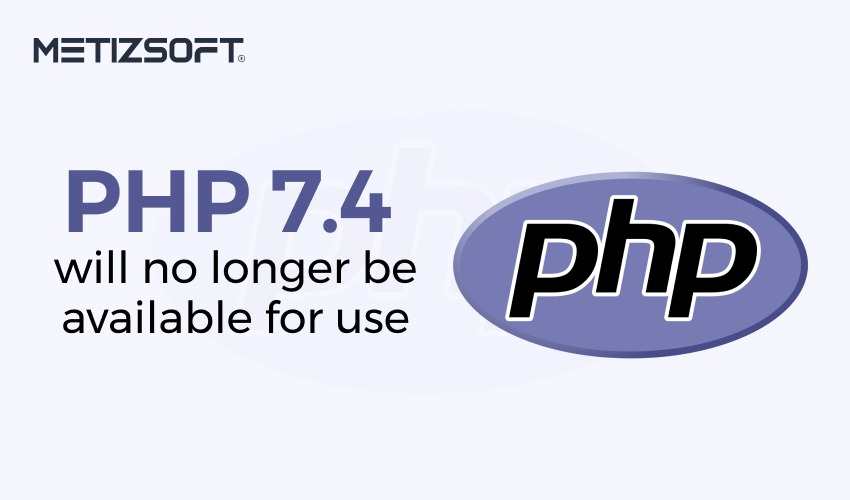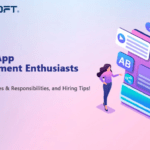
All the speculation you have heard these past few days is true; PHP wrapped up its 7.4 version for good on November 28, 2022. Users must upgrade to its latest version, PHP 8, which is still in beta form, to get the latest measures and benefits.
However, almost 60% of the entire website on the internet is written on PHP and might face some hindrances until they upgrade to the latest version.
In contrast, this upgradation could be a challenging segment for WordPress users, too, as almost 40% of websites on the internet are powered by WordPress.
If those WordPress sites continue using PHP 7.4 integrations and features, they could experience the worst malware attacks, and the security risks will always stay alive.
To help you avoid the risks for your WordPress sites and ensure seamless upgradation to PHP 8, here is a comprehensive guide with essential in-detail information.
Table of Contents
How Compatible is WordPress with PHP 8?
Those who know PHP 8.0 first came into the picture two years ago with limited backward compatibility. Initially, it did not fully allow the WordPress community to take advantage of the new PHP release.
Back then, PHP 7.4 ruled the entire community, and WordPress declared the 7.4 version its official choice for all significant WordPress releases.
However, the latest release of the WordPress 6.1 version ensures complete compatibility with PHP 8.
Without any second thought or confusion, you can install WordPress 6.1 using PHP 8 and enjoy the stable version to the fullest.
The previous WordPress PHP Versions, 5.9 and 6.0, were released in 2022 and offered only beta compatibility with PHP 8.0 and 8.1.
This determines that WordPress is still finding ways to onboard PHP 8 for complete support to its sites.
PHP 7.4 Support Lifecycle
All the PHP versions consist of 3 years of the total support life cycle – the first two years consist of active support, and the final year ensures critical security patching.
As soon as the version completes its three-year tenure, the community gets off its hands from it. The community regularly addressed all identified bugs and security vulnerabilities during the first two active years. In the third year, they ensure fixing those critical security issues on an as-needed basis.
In contrast to the PHP 7 segment, it first came to use in November 2019, and later in November 2021, its active support as per the rules ended.
Similarly, PHP 8.0 will end in November 2023, while PHP 8.1 will still receive continuous support until November 2024.
PHP 7.4 Past EOL Consequences
Since its arrival, PHP has become the core choice of server-side scripting language for significant website development, including WordPress and other content management systems. And why not?
PHP has all the high-end components that have helped developers curate dynamic, database-driven websites and web applications.
Every PHP version brings numerous essential updates and bug fixes, assuring performance improvements. However, limited backward compatibility can significantly lose functionality, as it highlights the importance of regular updates to your website code.
In WordPress, website owners can handle simple processes and only a few changes to its core. On the other hand, the plugin and theme developers will need to ensure their code is compatible with new PHP versions.
These things will keep you on edge as long as you explore them. Let’s find out some significant consequences you might face using PHP 7.4 end of life on your WordPress site.
Increased Security Risks
WordPress or any other platform; using outdated software increases security risks. With PHP 7.4 end of life, it no longer offers you more security updates for the version.
If you keep using the PHP 7.4 version, the release branch exposes your website to broader security vulnerabilities that can significantly increase the attack surface.
Reduced Website Stability
The latest PHP 8 has everything new, from features to components and configurations, and it hasn’t adapted any functionalities from its previous version of PHP 7.4.
That’s why updating to the latest WordPress release, 6.1 while using PHP 7.4 might reduce your application stability, as the WordPress core has undergone multiple changes to be compatible with PHP 8.
Downgrade its performance
With query caching and REST API optimization, WordPress 6.1 has assured high-end performance improvements.
Likewise, PHP 8 also ensured numerous improvements, resulting in better code quality and more efficient code processing.
That’s why it will downgrade your website’s performance if you won’t cope with both of their latest versions and decide to stay with PHP 7.4.
Benefits of updating your WordPress sites to PHP 8
Now that you understand the consequences of using PHP 7.4 past its end of life on your WordPress website, let’s move ahead to see all benefits of updating to PHP 8.
Full-fledged compatibility with WordPress 6.1 – The latest WordPress version fully supports PHP 8. Though it will be entirely compatible with WordPress until the last minor release reaches its end.
Lower Surface Attack – PHP 8 receives active community support for the first two years. In these years, all identified security vulnerabilities received rapid patching from the team.
Boosts Performance – PHP 8 has new features that enhance performance while ensuring faster web page load times for all websites. WordPress immensely get benefits from this.
Increase Development Experiences – All the new features introduced by PHP 8 simplify the WordPress PHP development process. It also brings more opportunities to plugin and theme developers.
Lowers Errors Probability – Using the newest WordPress release with the latest PHP version will help you better handle errors.
Follow the below procedure for a safe PHP 8 upgradation
Below we have mentioned the complete procedure for the PHP 8 upgradation of your WordPress website. But remember, It can lead to functionality loss or sometimes fatal errors, which might bring your website down. It is due to the outdated live code containing outdated functions by the PHP 8 release branch.
To reduce the downtime and website break, follow the below steps:
Create a staging environment
Building a staging environment will help you test new features and run updates before pushing all changes to the live site.
But make sure that your created staging environment must host your WordPress website (Copy version) and run on the same server as the live one.
In case you are on VPS or dedicated hosting – consider creating your website’s stagging version by cloning it to a subdomain of the actual domain name of your WordPress website.
Once done, you can add new DNS records and update your WordPress website database URLs. It will load the staging website using the new address.
Update your staging website to PHP 8.1 and WordPress 6.1
Once you finish creating the staging environment, the next step is to update the copy version of your live website with PHP 8.1 and the new WordPress version.
Consider updating WordPress to 6.1 via the admin dashboard and later switch to PHP 8.1 from your hosting control panel.
Ensure your active theme and all plugins are up to date with the latest version. You can run plugin and theme updates from the WordPress dashboard or the WordPress Command Line Interface.
Run multiple tests of all areas of your WordPress website
After updating your staging website to PHP 8 and WordPress 6.1, including all plugins and the active theme, run multiple tests to check their credibility.
It will help you find the early bugs you can repair in the beginning and make your website ready for use without any worry.
Address issues caused within the staging environment
Once you verify the errors, The next is to work on restoring full functionality until it is resolved entirely. Deactivate all plugins if needed to find the specified one causing issues.
You can temporarily switch to any of the default block themes of WordPress. If you need clarification on the procedure, contact your hosting provider team or review the guides/documents on how to fix common WordPress errors.
Backup your Live WordPress Site
Being the owner, you must take a robust backup strategy to ensure the high-end protection of your website from any failed updates, fatal errors, or malware infections.
Your backup must address the WordPress database and all website files stored on the disk. So ensure enabling the right tools and planning for the backup.
Update your live WordPress site to PHP 8
Now that you have backed up your WordPress site and made the necessary modifications move ahead to update to PHP 8.
Log in to your hosting control panel and switch to PHP 8.1 – the current stable PHP version of the new release branch.
How can Metizsoft Solutions Help You?
WordPress PHP 7.4 End of Life is a massive event for everyone, especially for the WordPress community. deliver all relevant support.
We promise you of full product compatibility with the PHP 8 release branch. Moreover, our dedicated PHP development team will help you transition smoothly to WordPress 6.1 and PHP 8.
You can Hire PHP Developers at your convenience from us on an hourly, monthly and part-time basis.
AboutChetan Sheladiya
Related Posts
What If We Try The Combination of React and Node.JS to Create Dynamic Web Applications!
We are living in the digital era where innovation and experiments have become a daily routine for tech enthusiasts searching...
Why is CodeIgniter the Right Choice: Features & Benefits Explained!
The increasing demand for websites and apps has led to vast improvements in programming languages and frameworks. Web apps...

